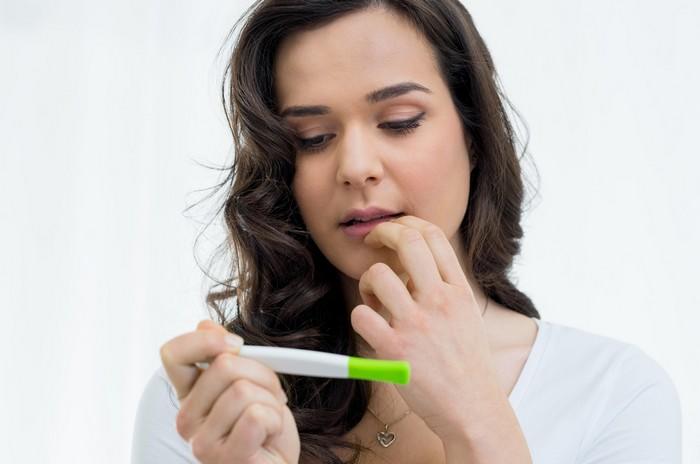Epididymitis is a condition that causes inflammation of the epididymis, the coiled tube located at the back of the testicle. This condition can lead to significant pain, swelling, and discomfort in the scrotum. Epididymitis is often caused by a bacterial infection, including sexually transmitted infections (STIs) such as chlamydia and gonorrhea, as well as urinary tract infections (UTIs). It can also result from non-infectious causes such as trauma, prolonged sitting, or chemical irritation from urine reflux.
One of the most common concerns for individuals diagnosed with epididymitis is how long it will take to recover. The recovery time varies depending on the cause, severity, and how quickly treatment is started. Some cases resolve within a few days, while others may take weeks or even months to fully heal. Proper treatment, lifestyle modifications, and self-care are essential for a smooth and timely recovery.
How Long Does It Take to Recover from Epididymitis?
The recovery time for epididymitis depends on several factors, including the underlying cause, severity, and effectiveness of treatment. Most mild to moderate cases improve within one to two weeks with proper antibiotic treatment and supportive care. However, in more severe cases or when complications arise, recovery may take up to six weeks or longer.
Mild Cases
In mild cases of epididymitis, symptoms such as pain, swelling, and discomfort typically start to improve within three to five days after starting antibiotics. However, complete recovery may take about one to two weeks. Patients should continue taking antibiotics as prescribed, even if they start feeling better before completing the full course. Stopping medication too soon can lead to recurrence or antibiotic resistance.
Moderate to Severe Cases
For moderate to severe cases, where the infection is more extensive or involves complications, recovery may take longer. Swelling and discomfort can persist for up to four to six weeks. Pain management and supportive measures, such as scrotal elevation and ice therapy, are crucial for relief. Some patients may experience lingering discomfort even after the infection clears, requiring additional follow-ups with a healthcare provider.
Chronic Epididymitis
In some cases, epididymitis can become chronic, meaning symptoms persist for more than three months despite treatment. Chronic epididymitis can be challenging to manage and may require prolonged antibiotic therapy, anti-inflammatory medications, and lifestyle adjustments. Some cases of chronic epididymitis are non-infectious and may be related to previous infections, nerve pain, or autoimmune reactions.
Factors That Affect Recovery Time
Several factors can influence how long it takes to recover from epididymitis.
Cause of the Infection
The type of infection causing epididymitis plays a crucial role in determining recovery time. Bacterial infections, particularly those caused by STIs, often respond well to antibiotics and clear up within a couple of weeks. However, infections related to urinary tract issues or chronic bacterial prostatitis may take longer to resolve.
Timeliness of Treatment
Seeking medical attention early can significantly shorten the recovery period. Delayed treatment can allow the infection to worsen, increasing the risk of complications and prolonging recovery. Patients who start antibiotics and supportive care at the first sign of symptoms often recover faster than those who wait until symptoms become severe.
Underlying Health Conditions
Individuals with underlying health issues, such as diabetes or a weakened immune system, may experience a longer recovery time. These conditions can slow the body’s ability to fight infection and heal. Patients with a history of recurrent urinary tract infections or prostatitis may also take longer to recover.
Compliance with Treatment
Strict adherence to the prescribed treatment plan is essential for a full recovery. Patients who do not complete their antibiotic course, skip doses, or engage in activities that worsen symptoms, such as heavy lifting or sexual activity, may experience prolonged recovery or recurrent infections.
Treatment and Recovery Tips
Proper treatment and supportive care can help speed up the recovery process and reduce the risk of complications.
Antibiotic Therapy
Since bacterial infections are the most common cause of epididymitis, antibiotics are the primary treatment. The choice of antibiotic depends on the suspected cause of the infection. Patients should complete the full course of antibiotics as prescribed by their doctor.
Pain and Swelling Management
Pain and swelling can be managed with over-the-counter anti-inflammatory medications such as ibuprofen or acetaminophen. These medications help reduce inflammation and provide relief from discomfort.
Rest and Activity Modification
Resting and avoiding strenuous physical activity can prevent worsening of symptoms. Patients should avoid heavy lifting, prolonged standing, and sexual activity until symptoms resolve. Wearing supportive underwear or an athletic supporter can help reduce discomfort and provide scrotal support.
Ice Therapy
Applying ice packs to the affected area for 15 to 20 minutes at a time can help reduce swelling and numb pain. Ice should be wrapped in a cloth to prevent direct contact with the skin.
Hydration and Hygiene
Drinking plenty of fluids can help flush bacteria from the urinary system, reducing the risk of recurrent infections. Good personal hygiene, including washing the genital area daily and urinating after sexual activity, can also help prevent reinfection.
When to Seek Further Medical Attention
Although most cases of epididymitis improve with treatment, some situations require further medical evaluation.
Persistent Symptoms
If symptoms do not improve within a week of starting antibiotics or if they worsen, patients should consult their doctor. Persistent pain and swelling may indicate an abscess or chronic epididymitis.
High Fever or Chills
A high fever, chills, or severe fatigue may indicate that the infection has spread beyond the epididymis, requiring urgent medical attention.
Testicular Swelling or Hardness
If the swelling in the scrotum becomes severe, or if the testicle feels hard or significantly enlarged, it may be a sign of a more serious condition, such as testicular torsion or abscess formation.
Recurrence of Symptoms
If symptoms return after completing antibiotic treatment, further testing may be necessary to identify underlying conditions such as prostatitis, urinary tract abnormalities, or chronic infections.
Preventing Epididymitis Recurrence
Taking preventive measures can help reduce the risk of developing epididymitis again in the future.
Practicing Safe Sex
Using condoms and getting tested regularly for sexually transmitted infections can help prevent epididymitis caused by STIs.
Treating Urinary Tract Infections Promptly
Seeking early treatment for UTIs and prostate infections can prevent bacteria from spreading to the epididymis.
Avoiding Prolonged Sitting
Sitting for extended periods, such as during long car or plane rides, can contribute to epididymitis in some individuals. Taking breaks and standing up periodically can help improve blood circulation.
Conclusion
The recovery time for epididymitis varies depending on the severity of the infection, the effectiveness of treatment, and individual health factors. Mild cases often resolve within one to two weeks, while more severe cases may take up to six weeks. Chronic epididymitis can persist for several months, requiring ongoing treatment and lifestyle modifications.
Early diagnosis, proper medical treatment, and supportive care are key to a smooth recovery. Completing the full course of antibiotics, managing pain and swelling, and making necessary lifestyle adjustments can help speed up healing and prevent complications. If symptoms persist or worsen, seeking further medical evaluation is essential to rule out other conditions and ensure a full recovery.
Related topics:
Can I Live with Grade 3 Varicocele?
























